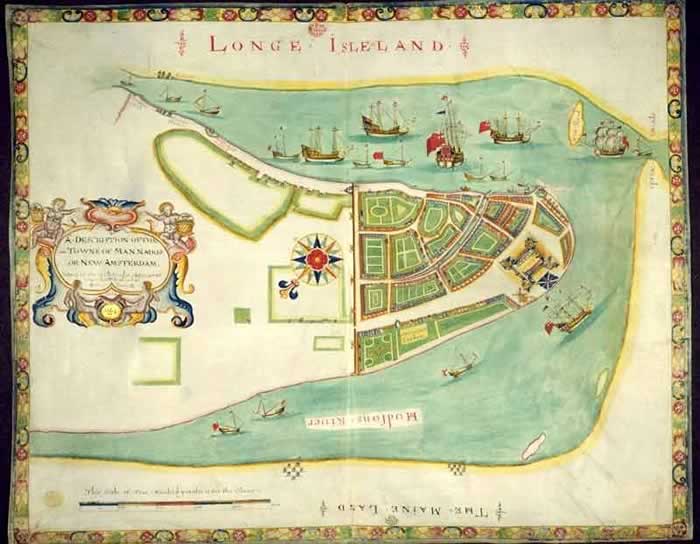|
|
Canku Ota |
|
|
(Many Paths) |
||
|
An Online Newsletter Celebrating Native America |
||
|
September 7, 2002 - Issue 69 |
||
|
|
||
|
This Date In |
||
|
North American Indian History |
||
|
from On This Date in North American Indian History at http://americanindian.net |
||
| Sept. 7, 1758: | According to some reports, a peace conference is held for the next two days between representatives of the British in New Jersey and the Minisink Indians. |
|
|
|
| Sept. 8, 1699: | The Tohome Indians live along the Gulf Coast in Alabama and Mississippi. In Biloxi, they formally establish peaceful relations with the French. |
|
|
|
| Sept. 9, 1814: | The Treaty of Fort Jackson (7 stat.120) officially ends the Creek War. The Creeks, including those who fought with Andrew Jackson, are forced to cede 22,000,000 acres, almost half their lands, to the United States. Timpoochee Barnard, one of the Yuchi Indian allies of the Americans, is one of the signatories to the treaty of Fort Jackson. Fort Jackson, formerly Fort Toulouse, is in modern Wetumpka, Alabama. |
|
|
|
 Acoma Pueblo, where the Spanish killed 1000 and captured 500 in a battle with the Indians in 1599. |
|
| Sept. 10, 1680: | The Pueblo Rebellion takes place in New Mexico under the leadership of a Tewa named Popé. Popé has arranged for an attack on as many of the Spanish missions as possible to all take place on the same day. Some sources say this happens on September 11th. |
|
|
|
| Sept. 11, 1802: | Tecumseh has predicted an earthquake. It happen and becomes known as the "New Madrid Earthquake." |
|
|
|
| Sept. 12, 1769: | Kumeyaay Indians fight with the Spaniards who have established the Mission San Diego de Alcala in what becomes San Diego, California. |
|
|
|
 A Description of the Towne of Mannados or New Amsterdam as it was in September 1661, (the'Duke's plan' of New York).1664. |
|
| Sept. 13, 1645: |
For several years, the Dutch, and the local Indian tribes near New Amsterdam and Pavonia, have been fighting. Hackensack Chief Oratamin negotiates a peace between the warring parties. It is another ten years before another major conflict erupted. |
|
|
|
| Sept. 14, 1806: | Lewis and Clark first reach a Minnetaree and Mandan village. |
|
|
|
| Sept. 15, 1514: |
Spanish Bishop Bartoleme de las Casas releases the Indians he holds as serfs in Hispaniola. |
|
|
|
| Sept. 16, 1851: | One in a series of treaties with California Indians is signed at Reading's Ranch. The treaty is designed to reserve lands and to protect the Indians. |
|
|
|
| Sept. 17, 1765: | Pontiac and the British sign a treaty |
|
|
|
 Doran Morris uses a cedar-smoked eagle feather to smudge Omahati, a sacred pole of the Omaha tribe. |
|
| Sept. 18, 1804: | Lewis and Clark meet with the Ottos to discuss the war with the Maha. |
|
|
|
| Sept. 19, 1854: | A Miniconjou Sioux, named High Forehead, kills a sickly cow near Fort Laramie, in southeastern Wyoming. The cow's owner complains to the fort's commander. A brash Brevet Second Lieutenant John L. Grattan, and thirty volunteers leave the fort to find the Sioux involved. Grattan goes to Conquering Bear's Brule Sioux camp near Ash Hollow, and demands the Indian who shot the cow. Grattan makes numerous threats to the Sioux, but they won't hand over High Forehead. During the parlay, a shot rings out, and Grattan's artillery gunners open fire on the camp. Conquering Bear tries to get both sides to stop shooting, but he is hit by an artillery round. Eventually, all but one of Grattan's men are killed in the fighting. |
|
|
|
| Sept. 20, 1789: |
An "Act Providing for the Expences Which May Attend Negotiations or Treaties with the Indian Tribes, and the Appointment of Commissioners for Managing the Same" is approved by the United States. |
|
|
|
|
For Information on This Date in Canada visit our friends at: |
|
Canadian
Aboriginal News |
|
|
||
|
|
||
| Canku Ota is a free Newsletter celebrating Native America, its traditions and accomplishments . We do not provide subscriber or visitor names to anyone. Some articles presented in Canku Ota may contain copyright material. We have received appropriate permissions for republishing any articles. Material appearing here is distributed without profit or monetary gain to those who have expressed an interest. This is in accordance with Title 17 U.S.C. section 107. | ||
|
Canku Ota is a copyright © 2000, 2001, 2002 of Vicki Lockard and Paul Barry. |
||
|
|
|
|
|
The "Canku Ota - A Newsletter Celebrating Native America" web site and its design is the |
||
|
Copyright © 1999, 2000, 2001, 2002 of Paul C. Barry. |
||
|
All Rights Reserved. |
||
